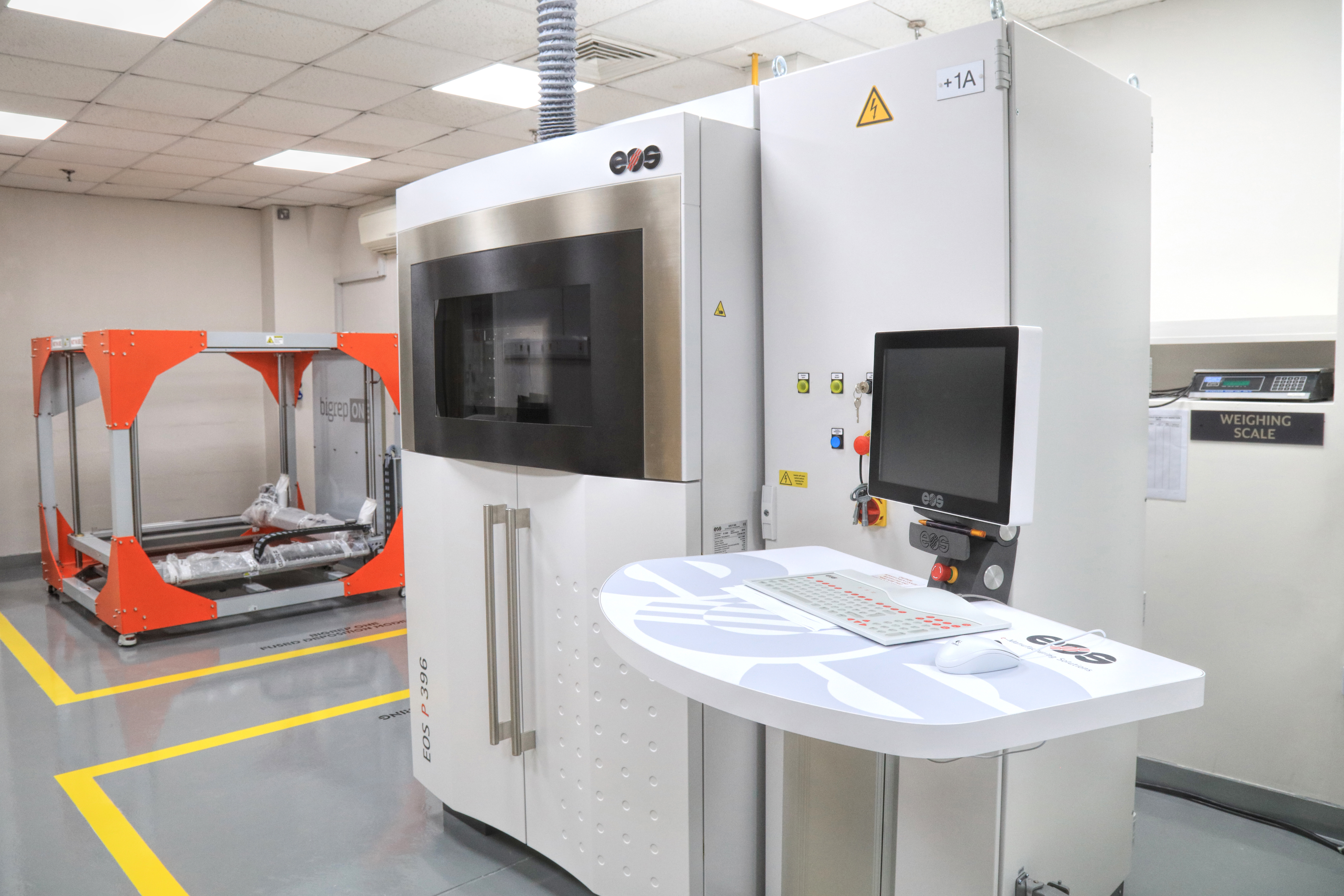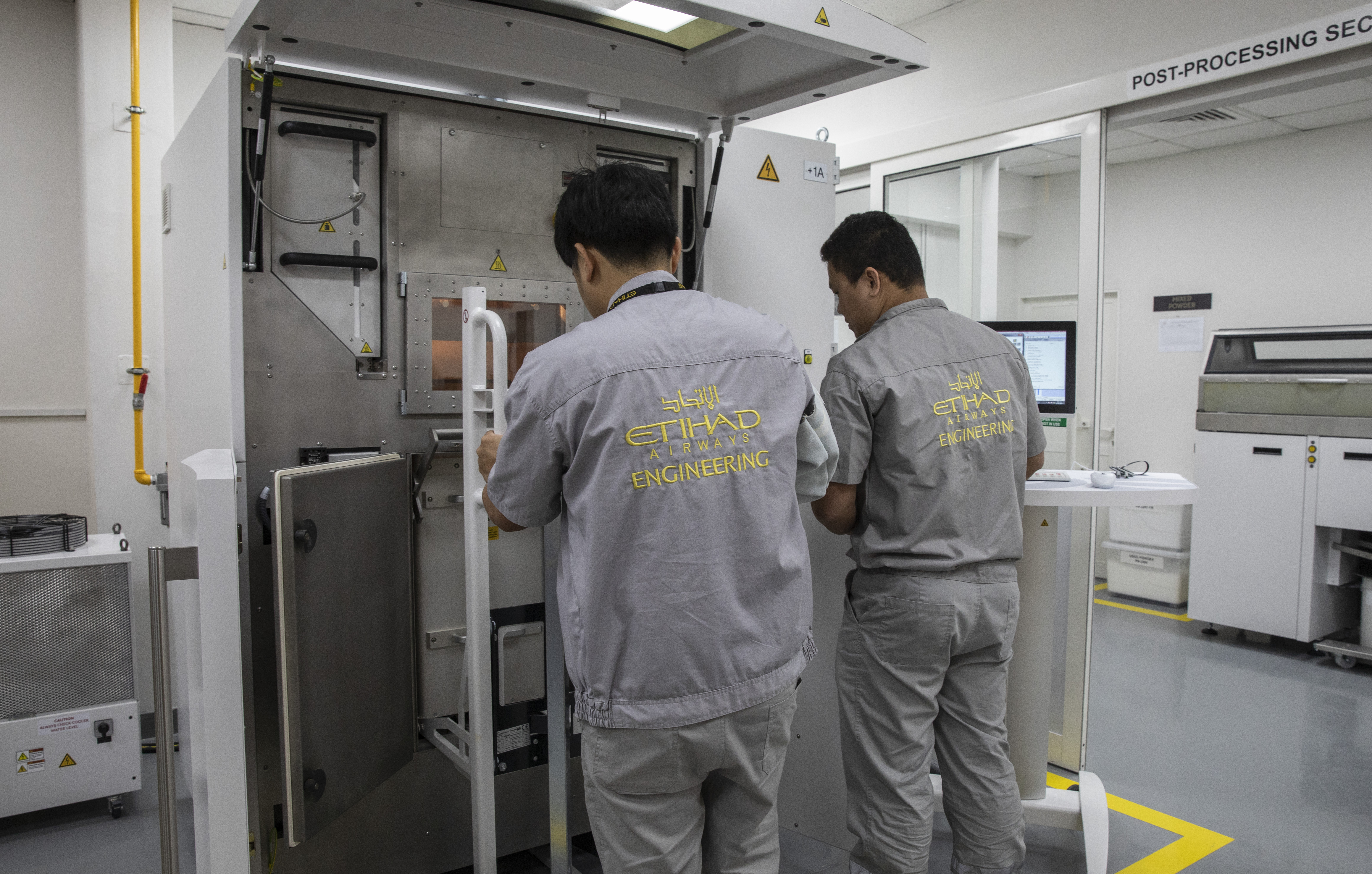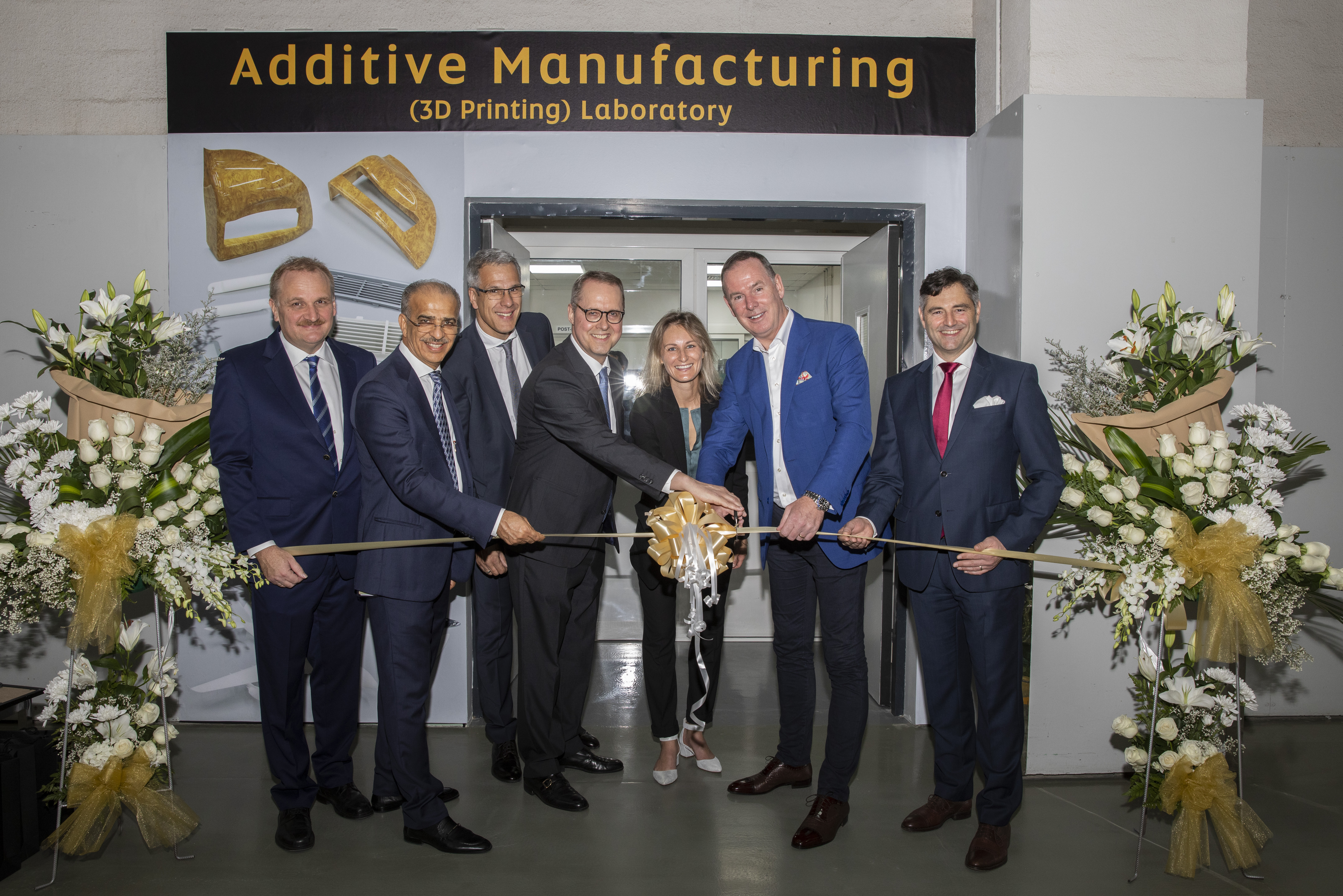Etihad Engineering, a division of the Etihad Aviation Group dedicated to Maintenance, Repair and Overhaul (MRO) services, has opened an additive manufacturing facility in Abu Dhabi, in collaboration with German 3D printer manufacturers EOS and BigRep.
It is the region’s first 3D printing lab with Design and Production Approval from the European Aviation Safety Agency (EASA) to produce aircraft parts using powder-bed fusion technology. The facility features two approved 3D printers in total, from EOS and BigRep respectively. Its primary system is the EOS P 396 SLS 3D printer, which received Airline MRO approval from EASA in October 2019. The second machine is the BigRep ONE, a large-scale FFF 3D printer. Using the 3D printers, Etihad Engineering expects to make quicker repairs, more lightweight designs and customized parts tackling key challenges in aerial vehicle downtime.
Bernhard Randerath, VP Design, Engineering and Innovation, Etihad Engineering, commented: “The launch of the new facility is in line with Etihad Engineering’s position as a leading global player in aircraft engineering as well as a pioneer in innovation and technology.”
“We are extremely proud to collaborate with EOS and BigRep to expand our capability and support the UAE’s strategy to increase production technology and cement its position as a global aerospace hub.”

MRO 3D printing at Etihad Engineering
Etihad Engineering is the largest commercial MRO service provider in the Middle East, providing design, advanced composite repair, cabin refurbishment and component services for airlines across the world.
Seeking to integrate 3D printing technology into its process chain, Etihad Engineering first received EASA approval for the FFF process in 2017, and was the first airline MRO in the world to certify, print and fly 3D printed cabin parts.
The company’s collaboration with BigRep was initiated in 2018 when the two firms teamed up to develop an additive manufacturing roadmap for the aerospace industry. It focused on ways to develop 3D printing processes and standards for the production of aircraft interiors. Later in November 2018, it was announced that BigRep would also be providing its 3D printers to Etihad Engineering for MRO services.
In the same month, Etihad Engineering also entered into a new agreement with EOS to use its EOS P 396 system for MRO as well. The end goal of the collaboration is to produce 3D printed cabin interiors, using polymer technology. Steps to achieve this aim includes qualifying the machine, process and materials according to aviation regulations, and then rolling out EOS 3D printing abilities across the broader Etihad ecosystem.

3D printing cabin parts for MRO
Etihad Engineering’s new additive manufacturing laboratory is located at its facility adjacent to Abu Dhabi International Airport. The ceremony for the official opening of the lab was attended by His Excellency Ernst Peter Fischer, German Ambassador to the UAE.
Having received EASA approval for powder-bed fusion technology, Etihad Engineering will use the EOS P 396 3D printer to design, produce and certify additively manufactured components for demanding and high-quality aircraft applications and cabin parts. “Being committed to high-quality solutions and constant technology innovation, Etihad Engineering and EOS share the same mindset,” comments Markus Glasser, Senior Vice President, Export Region, EOS.
“Together, we want to bring the design and production of aircraft interior parts to the next level.”
The EOS P 396 has a build volume of 340 x 340 x 600mm, and is designed for the production of serial components, spare parts, functional prototypes and models directly from CAD data. It is capable of producing parts from polymer materials like flame-retardant PA 2241 FR. It can therefore be used to produce cabin parts for an aircraft’s heavy maintenance C-Check, which involves the inspection of a large number of components. Cabin defects that are detected can be replaced with a short turnaround time by 3D printing the part. “Producing cabin interior parts additively will offer a substantial value-add in terms of optimized repair, lightweight design, shorter lead times and customization, addressing some of the key challenges of the aerospace industry, ” adds Glasser.
The BigRep ONE 3D printer features a 1005 x 1005 x 1005 mm build volume. Etihad Engineering will leverage the large-scale FFF system to produce large parts, jigs and fixtures as well as molds on site and on demand. The company also plans to install the more advanced BigRep PRO system in the future. “Our 3D printers have established 3D printing and AM as an innovative, added-value technology in the aviation industry,” explains Martin Back, BigRep Managing Director. “They offer an unprecedented level of precision, quality and speed, and enable us to use the high-performance, innovative printing materials the aviation industry requires.”

Subscribe to the 3D Printing Industry newsletter for the latest news in additive manufacturing. You can also stay connected by following us on Twitter and liking us on Facebook.
Looking for a career in additive manufacturing? Visit 3D Printing Jobs for a selection of roles in the industry.
Featured image shows Etihad Engineering facility. Photo via Etihad Engineering.


